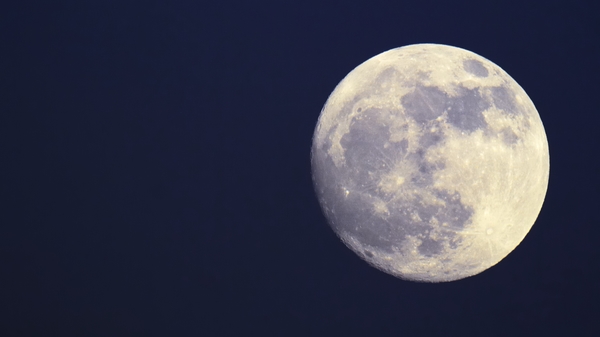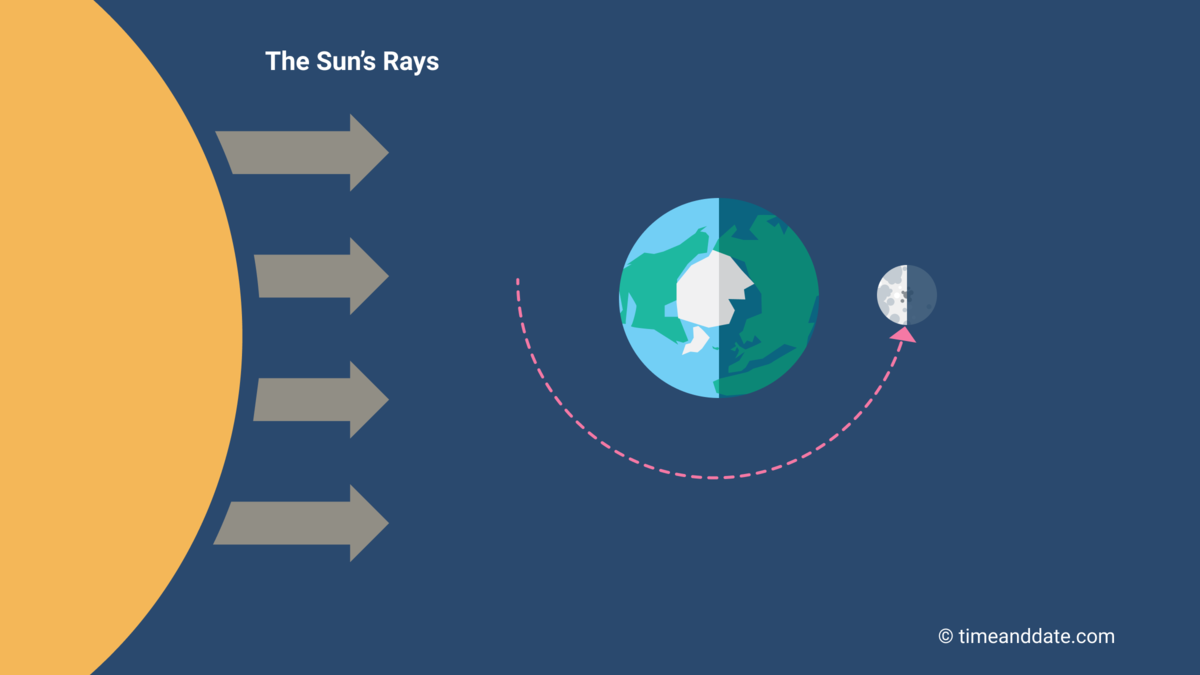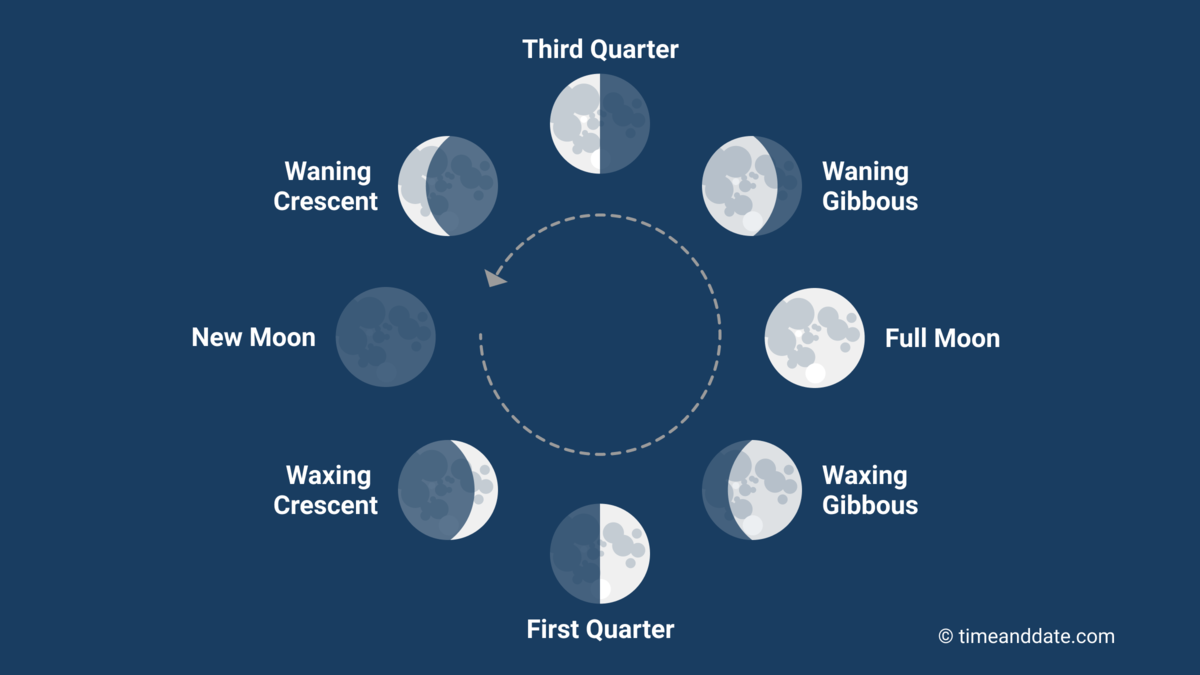Full Moon – the Moonlight Phase
Full Moon is the most striking Moon phase when the entire face of the Moon is lit up.

A Full Moon is when the Sun and the Moon are aligned on opposite sides of Earth.
©iStockphoto.com/Sjo
Saturn Moon close approaches: October 2024 to January 2025
Super Hunter’s Moon: Closest Full moon of 2024
Comet update: Two comets in October?
Next Full Moon
Nov 15, 2024 at 4:28 pm
Previous Full Moon
Oct 17, 2024 at 7:26 am
Times for the Full Moon vary by time zone. Times and dates are based on the local time in Columbus. Change location
The Moon: Our natural satellite
When Is the Full Moon?
The Full Moon is when the Sun and the Moon are aligned on opposite sides of Earth, and 100% of the Moon's face is illuminated by the Sun (see illustration).
That said, some Full Moons are only 99.9% illuminated, as seen from Earth. The reason why we cannot see the entire illuminated hemisphere of the Moon during some Full Moons is that the Moon's orbit around Earth is inclined at an angle of about 5° in relation to the Earth's orbital plane, the ecliptic. If the Full Moon occurs at a moment when the Moon is above or below the ecliptic, we view the Moon at an angle that diminishes the illumination percentage by a tiny amount.
The Moon is in constant motion around the Earth, so—technically speaking—the Full Moon only lasts for an instant of time. This means the exact time for Full Moon is during the day on parts of the planet.
Still, the Moon can appear to be full a day before or after when more than 98% of the Moon's disc is lit-up. That can make it tricky to tell the difference between a Full Moon and the last stage of a Waxing Gibbous Moon or the beginning of a Waning Gibbous Moon.
Is the Moon upside-down in the other hemisphere?


Full Moon is when the Sun and the Moon are aligned on opposite sides of Earth.
©timeanddate.com
Earth Between the Sun and the Moon
The technical term for when three bodies—such as the Sun, Earth, and the Moon—are in alignment is syzygy.
When the side of the Moon we can see from Earth is fully lit up at Full Moon, the other side is in darkness. The opposite happens at New Moon.
The Full Moon is visible in the sky from around sunset to sunrise. Generally speaking, at the precise moment of the Full Moon alignment, the Moon is only visible in the night part of Earth. In special cases, however, the effect of refraction (as well as the tilt of the Moon's orbit) means that it is possible for the Sun and the Full Moon to be visible at the same time.
The Full Moon Causes Lunar Eclipses
Two or three times a year, the Full Moon phase coincides with the Moon reaching the lunar nodes of its orbit. These are the points where the Moon's orbit crosses the ecliptic, which is the Sun's path, seen from Earth. When this happens, Earth casts its shadow on the Full Moon, causing a lunar eclipse.
On the other hand, solar eclipses happen if the Moon comes close to the lunar nodes around New Moon.

A red Moon during a total lunar eclipse on September 28, 2015.
Deanne Fortnam
Supermoon and Micromoon
The point of the Moon's orbit closest to Earth is called perigee, and the point farthest away is known as apogee.
When a Full Moon is close to the perigee, it is known as a Supermoon or Super Full Moon. When a Full Moon is close to the apogee, it is called a Micromoon.
How Many Full Moons in a Year?
Most years have 12 Full Moons, one each month. However, our calendar is not perfectly synchronized with astronomical events. Therefore, now and then, a year has 13 Full Moons. When this happens, at least one of those Full Moons is called a Blue Moon.
Lunar Libration: The Rocking Moon
The Moon orbits Earth counterclockwise on an elliptical path when looking down at the Earth's North Pole, and the same side of the Moon always faces Earth. However, over time, the Moon rocks slightly from north to south and wobbles a little from east to west. This motion, known as lunar libration, makes it possible to see up to 59% of the Moon’s surface from Earth, although only 50% at a time.
Higher Tides at Full Moon
The most significant difference between high and low tide is around Full Moon and New Moon. During these Moon phases, the Moon and the Sun's gravitational forces combine to pull the ocean’s water in the same direction. These tides are known as spring tides or king tides.
Third Primary Moon Phase
Full Moon is the third of the four primary Moon phases, which occur at specific moments in time. The other three are New Moon, First Quarter Moon, and Third Quarter Moon.
In addition, there are four intermediate phases that take up the time in between the primary phases. These are Waxing Crescent Moon, Waxing Gibbous Moon, Waning Gibbous Moon, and Waning Crescent Moon.


It takes around 29.5 days to move through the eight Moon phases.
©timeanddate.com
Cultural and Religious Significance
The Moon has influenced human culture for millennia, and the Full Moon phase in particular. The date for Easter Sunday, for example, is determined based on the Full Moon and the vernal equinox.
Celebrating the Solstice Under a Full Moon
The Moon has also inspired the invention of countless deities, like the Roman goddess Luna or her Norse male counterpart Máni, who gave his name to Monday.
In the past, it was common to think that the Moon caused many forms of mental illness, hence the name lunatic. The Full Moon has even been held responsible for supernatural transformations, changing otherwise harmless men into ferocious werewolves.
Sleep, crime, and menstruation: how Full Moons affect humans
Even today, people use ancient Full Moon names, like the Harvest Moon and the Strawberry Moon.